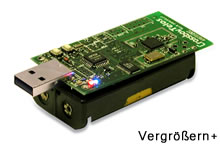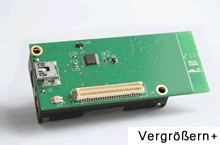
Wireless Modules |
|
MEMSIC provides a broad portfolio of wireless modules to meet the specific needs of your application for either end-user or OEM designs. These platforms are designed to provide customers with all of the tools needed to evaluate, design and develop a wireless sensor network. |
|
Typical Applications: Radio & Networking Research, Large-scale Wireless Networks, Distributed Computing Platforms |
|
XM2110CA IRIS 2.4GHz IRIS OEM Edition Module |
|
The XM2110CB is based on the Atmel ATmega1281. The ATmega1281 is a low-power microcontroller which runs MoteWorks from its internal flash memory. This a single processor board (XM2110) can be configured to run your sensor application/processing and the network/radio communications stack simultaneously. The IRIS 51-pin expansion connector supports Analog Inputs, Digital I/O, I2C, SPI and UART interfaces. These interfaces make it easy to connect to a wide variety of external peripherals. |
|
MPR2400CB - 2.4GHz MICAz Processor Board |
|
The MPR2400 is based on the Atmel ATmega128L. The ATmega128L is a low-power microcontroller which runs MoteWorks from its internal flash memory. A single processor board (MPR2400) can be configured to run your sensor application/ processing and the network/radio communications stack simultaneously. The 51-pin expansion connector supports Analog Inputs, Digital I/O, I2C, SPI and UART interfaces. These interfaces make it easy to connect to a wide variety of external peripherals. The MICAz (MPR2400) IEEE 802.15.4 radio offers both high speed (250 kbps) and hardware security (AES-128). |
|
TPR2420CA - TelosB Mote with Sensor Suite |
|
The TPR2420 bundles all the essentials for lab studies into a single platform including: USB programming capability, an IEEE 802.15.4 radio with integrated antenna, a low-power MCU with extended memory and an optional sensor suite. The TelosB platform was developed and published to the research community by UC Berkeley. This platform delivers low power consumption allowing for long battery life as well as fast wakeup from sleep state. The TPR2420 is compatible with the open-source TinyOS distribution, this is a small, open-source, energy-efficient software operating system developed by UC Berkeley which supports large scale, self-con- figuring sensor networks. The source code software development tools are publicly available at: http://www.tinyos.net. |
|
LPR2400 – LOTUS Processor Radio Processor Board |
|
The Lotus platform features several new capabilities that enhance the overall functionality of MEMSIC’s wireless sensor networking products. Lotus is based on the NXP LPC1758. The LPC17xx is 32-bit ARM Cortex-M3 based microcontroller for embedded applications featuring a high level of integration and low power consumption. A single processor board can be configured to run your sensor application/processing and the network/radio communications stack simultaneously. The Lotus 51-pin expansion connector supports Analog Inputs, Digital I/O, I2C, SPI and UART interfaces. These interfaces make it easy to connect to a wide variety of external peripherals. |
|
Typical Applications: Acoustic Sensing, Video, Seismic Vibration Monitoring |
|
MCS410CA 433MHz Cricket Mote Platform |
|
The Cricket Mote is a location aware version of the popular MICA2 low-power Processor/Radio module. The Cricket Mote includes all of the standard MICA2 hardware and an ultrasound transmitter and receiver. This device uses the combination of RF and ultrasound technologies to establish differential time of arrival and hence linear range estimates. |
|
Typical Applications: WSN System Enablement, Asset Management, Ubiquitous Computing |
|









